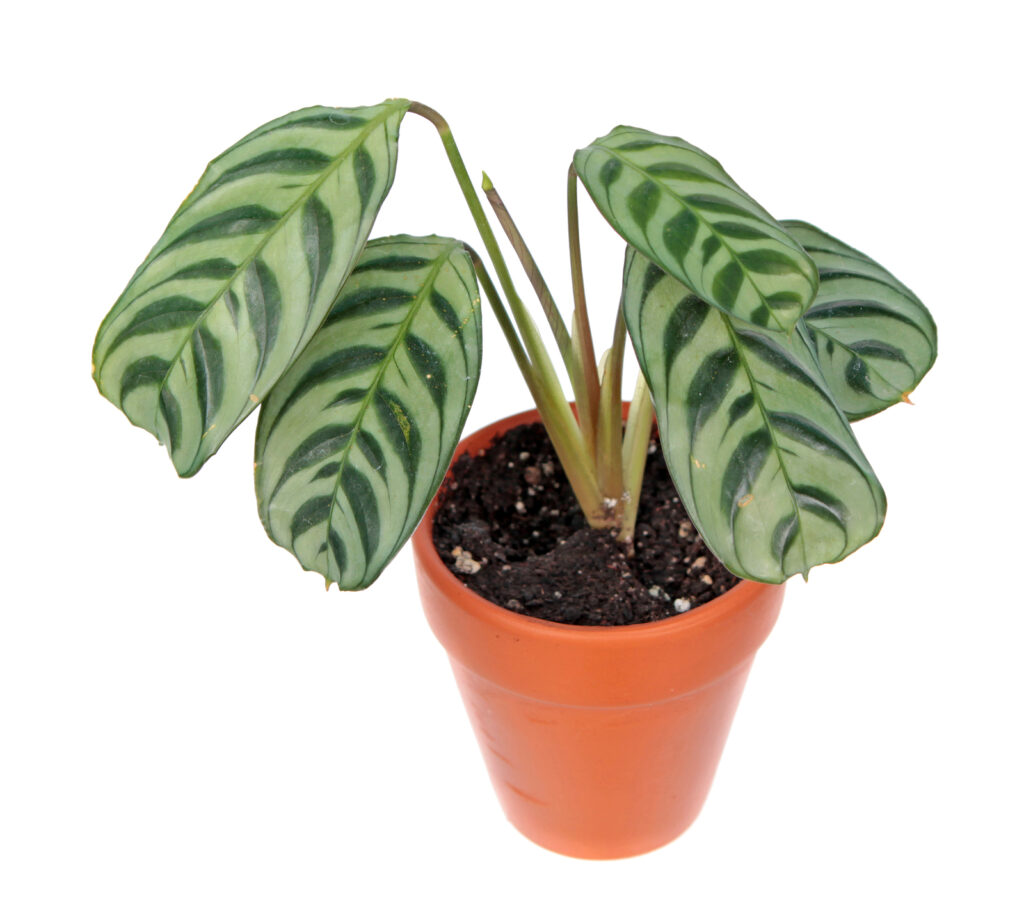Ctenanthe is grown mostly for its unusual foliage. Young plants commonly produce several short stalks, each then produces a long stem with stems and leaves branching from the stalks. Leaves are various shades of green with yellow markings and reddish undersides.
Get to know Ctenanthe
- Plant type: Tropical perennial
- Growing Zones and range:
- Hardiness: Prefers 70° to 75°F (21°-24°C) during the day, slightly cooler at night.
- Height and width: Up to 36 inches (91cm) tall
- Foliage: Oblong leaves on slender stalks; leaves are green with regular silver-white markings between the veins and burgundy-red undersides.
- Flowers: Inconspicuous white flowers from in spikes
- Bloom time: Summer
- Uses: Houseplant
- Botanical name: Ctenanthe oppenheimiana
- Common name: Ctenanthe

Where to plant Ctenanthe
- Ctenanthe grows best in bright light, no direct sun.
- Grow Ctenanthe in an all-purpose potting mix.
How to water and feed Ctenanthe
- Keep the soil evenly moist. Mist frequently; Ctenanthe grows best with 50 percent humidity.
- Fertilize Ctenanthe every 2 weeks during the growing season with an all-purpose fertilizer for houseplants.
Ctenanthe care
- Ctenanthe prefers to be slightly potbound; repot every 3 or 4 years.
- Let Ctenanthe rest during the winter; reduce water, never allowing the soil to dry out completely; withhold fertilizer.
- Mealybugs and spider mites may attack Ctenanthe.
Ctenanthe propagation
- Propagate Ctenanthe by division in spring.
Ctenanthe varieties to grow
- Ctenanthe ‘Burle Marx’ grow to 15 inches; tops of leaves are gray-green feathered with dark green.
- C. compressa grow 2 to 3 feet high; leathery leaves are oblong and asymmetrical.
- C. oppenheimiana grow 3 to 5 feet tall with narrow, leathery leaves that are dark green and banded with sliver above.



